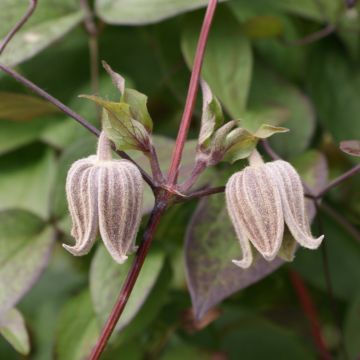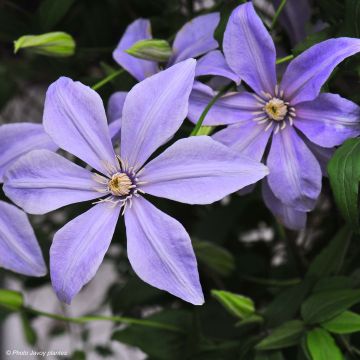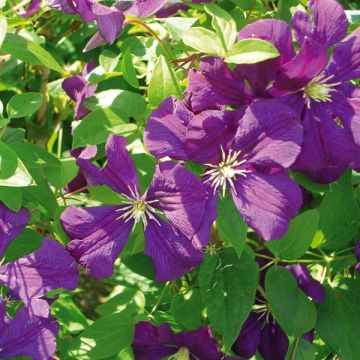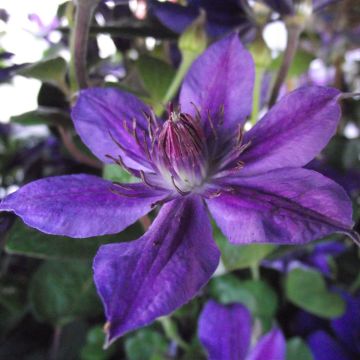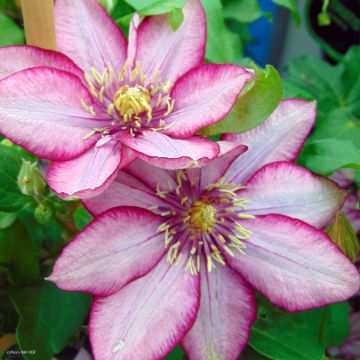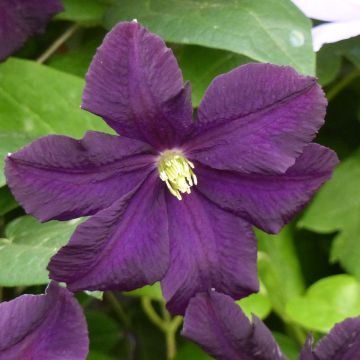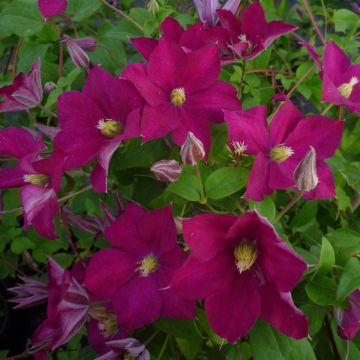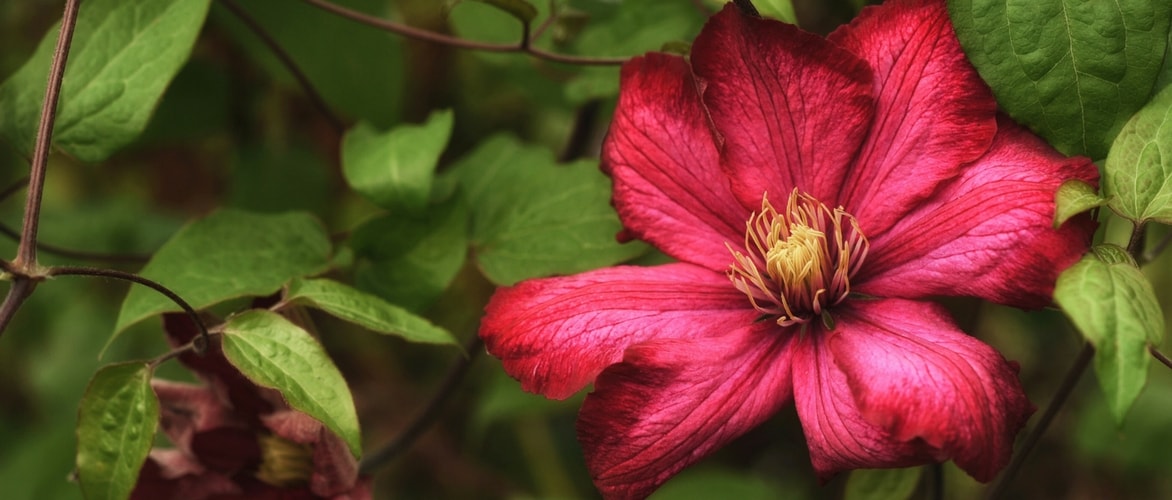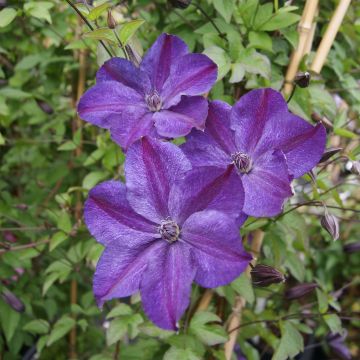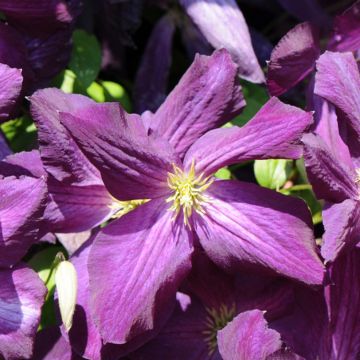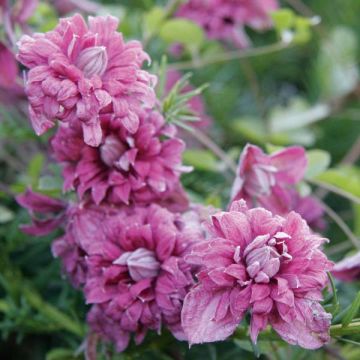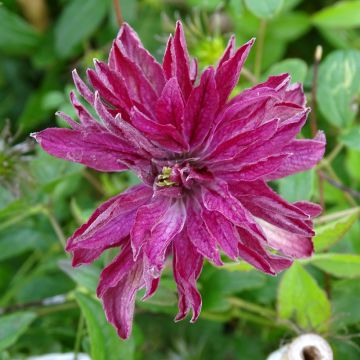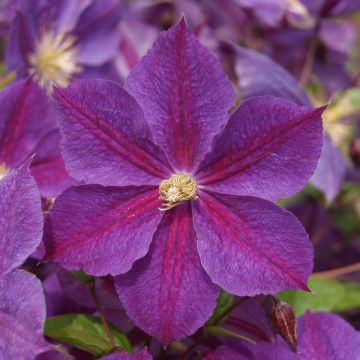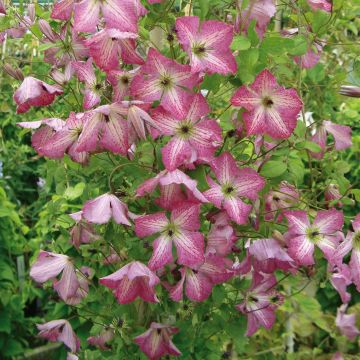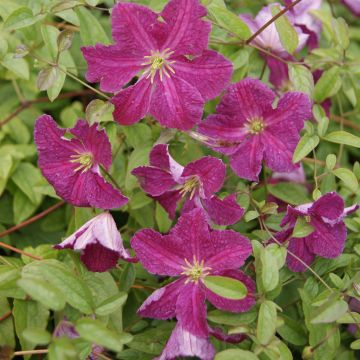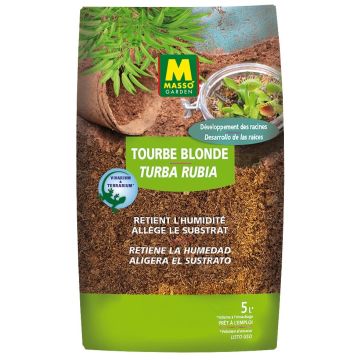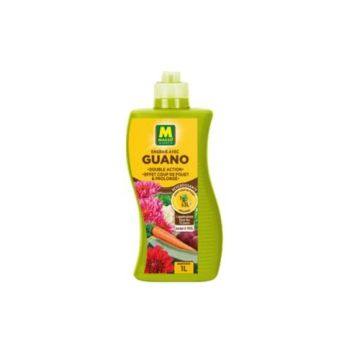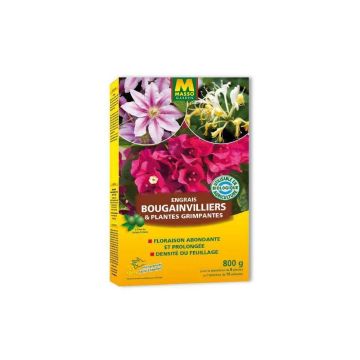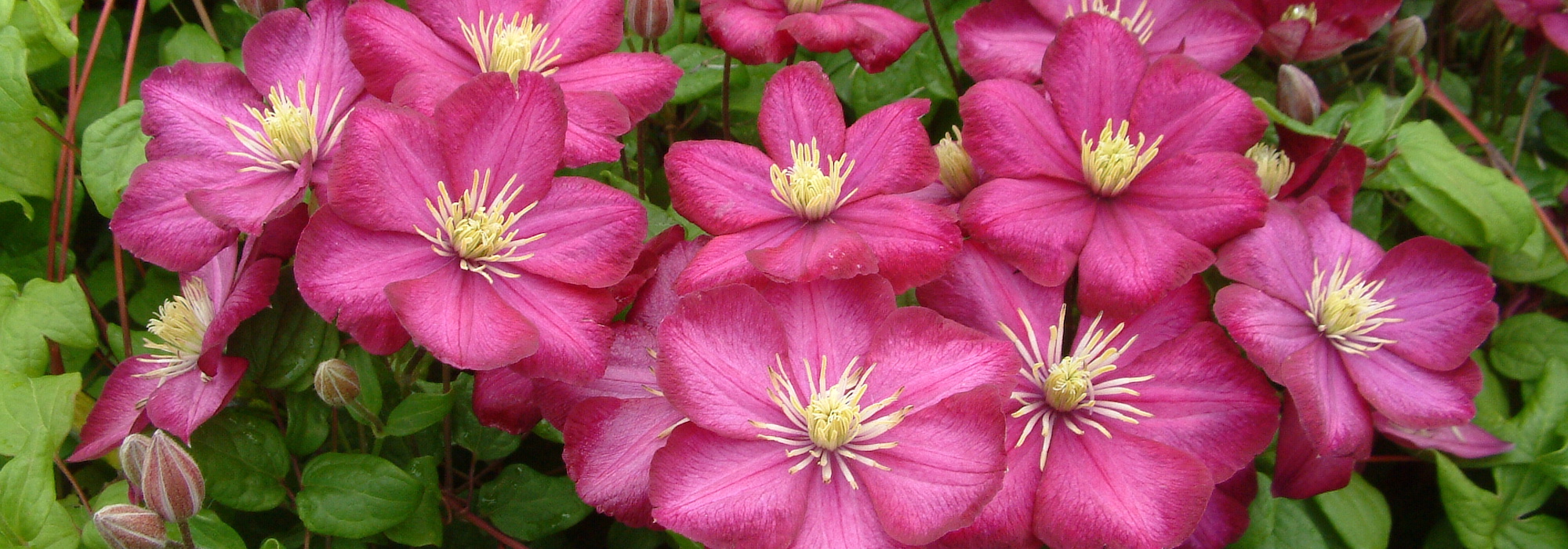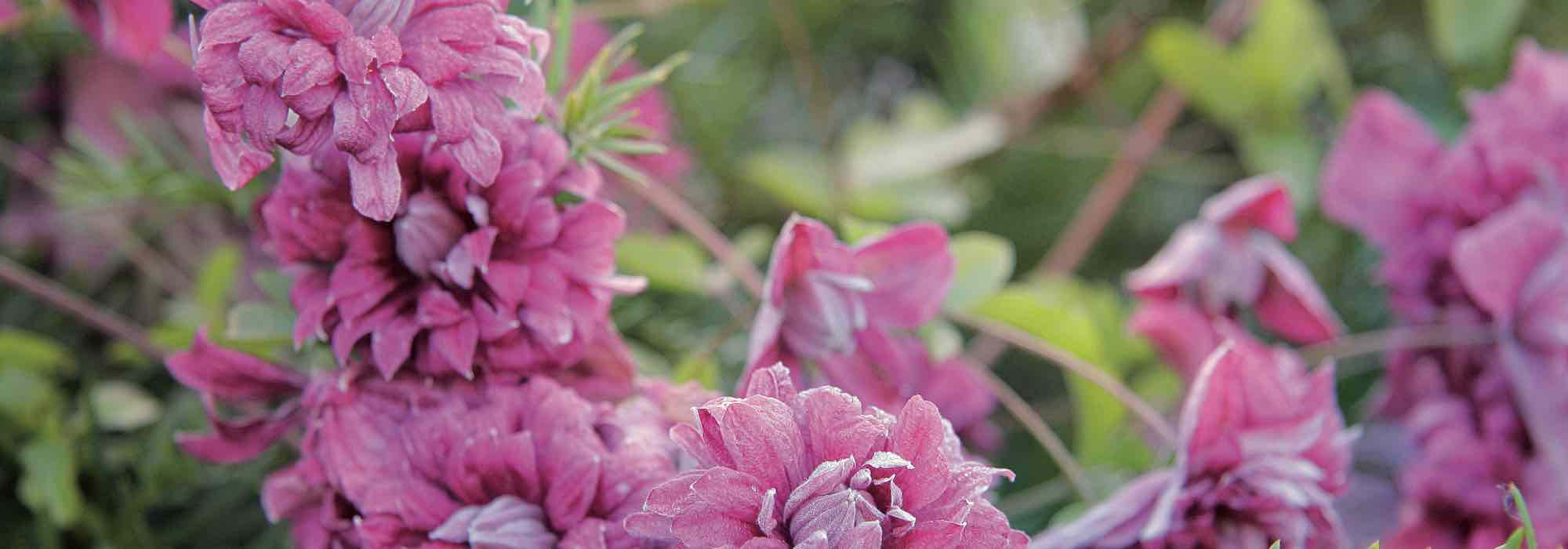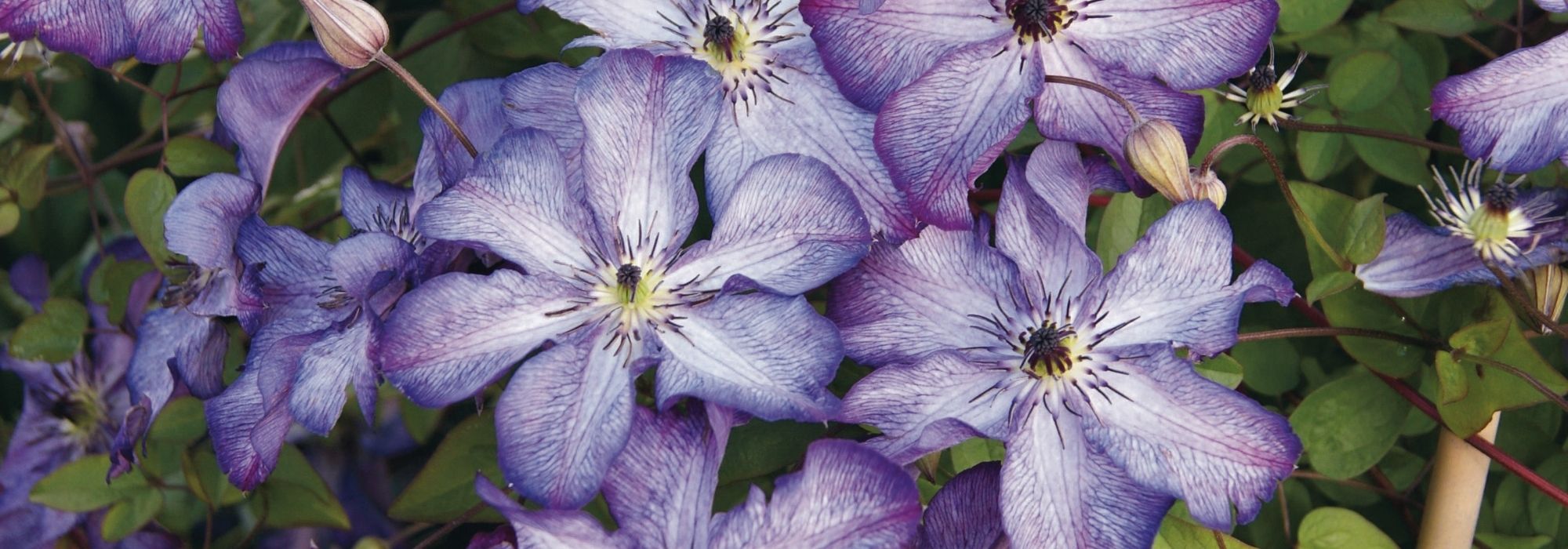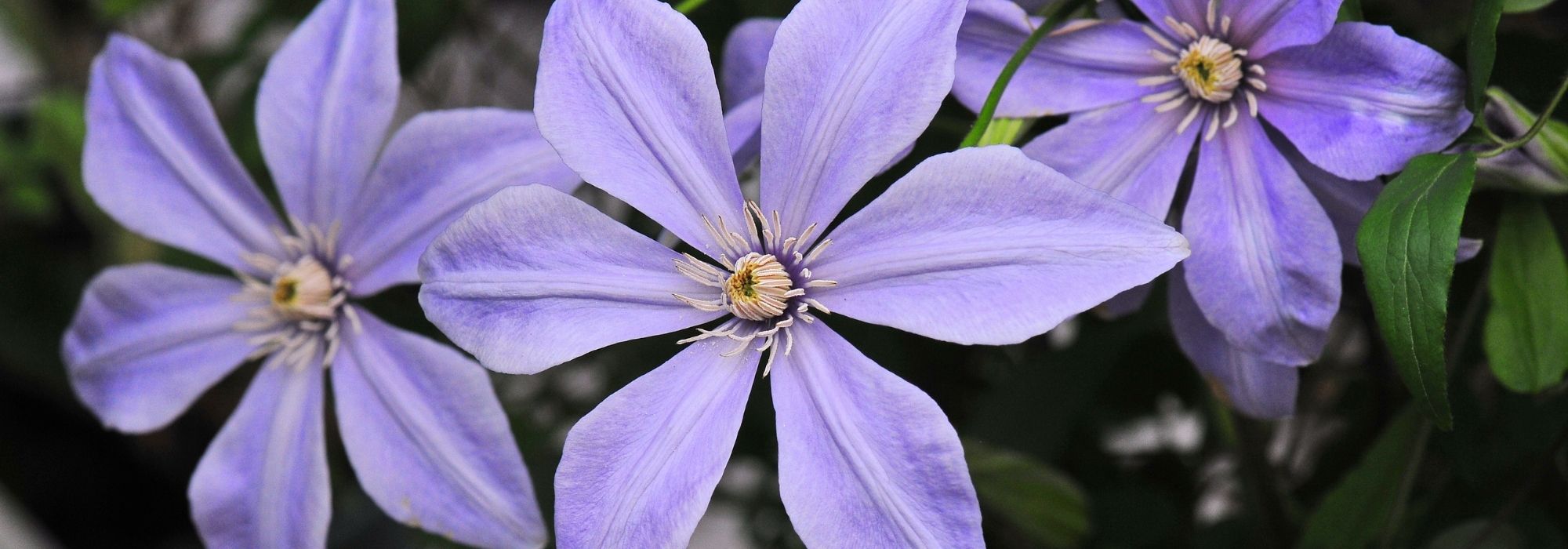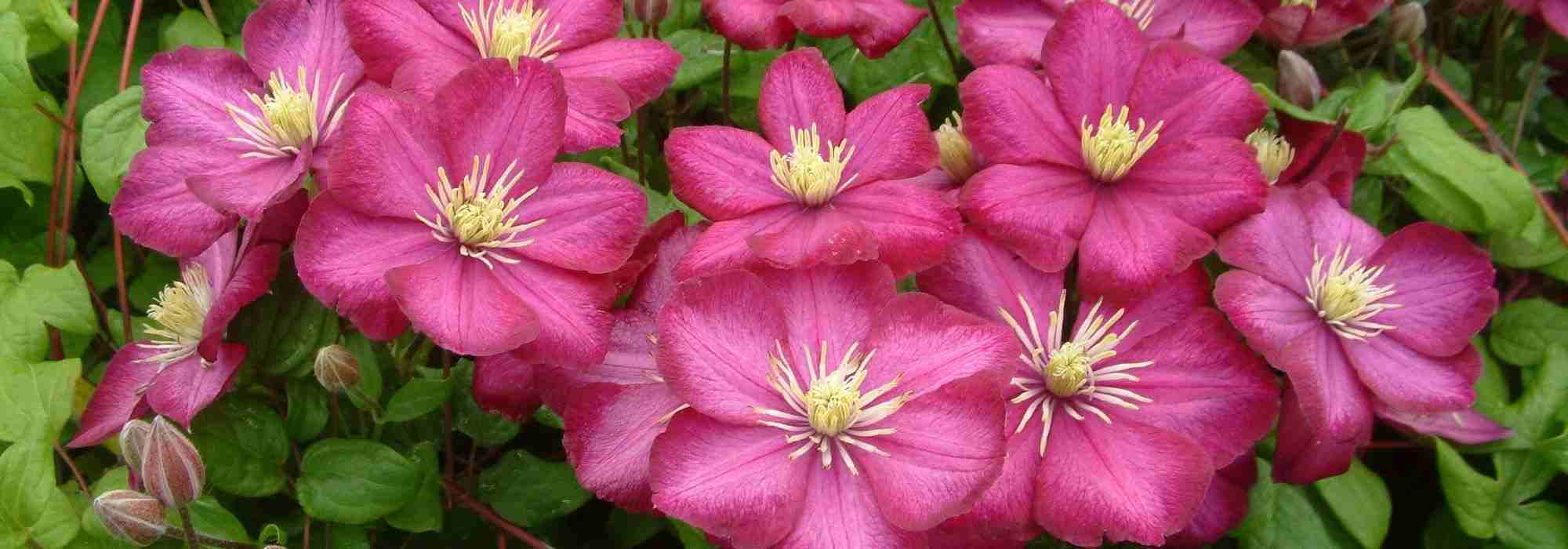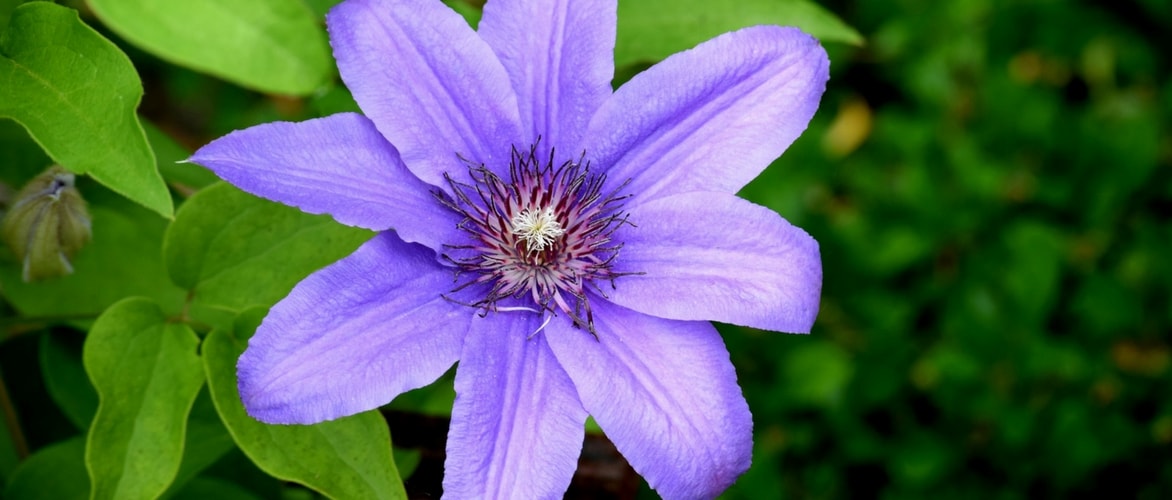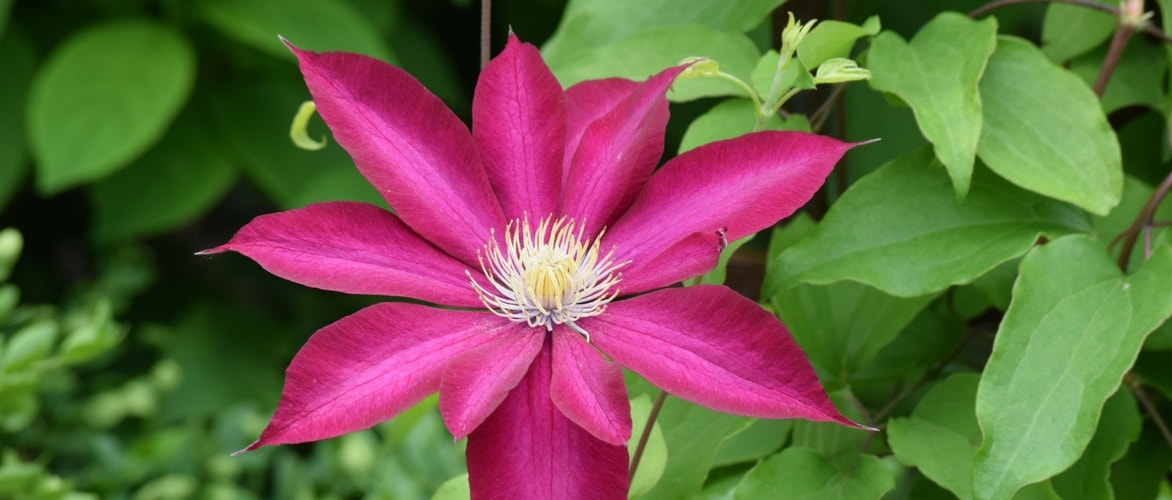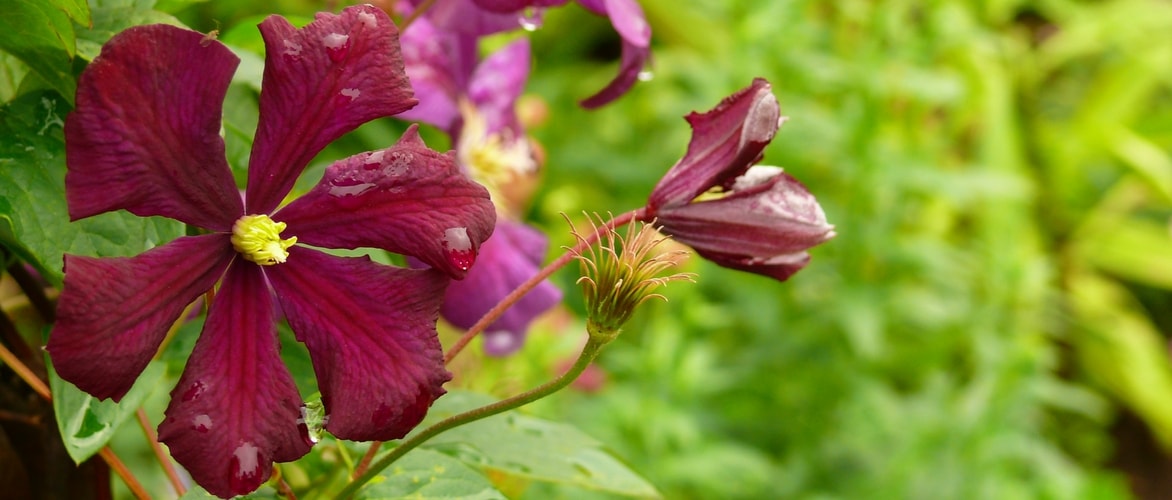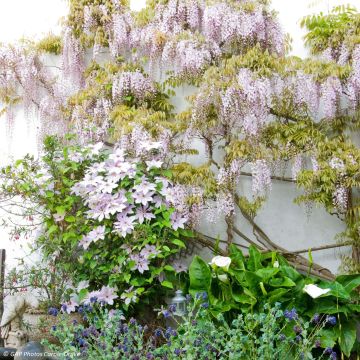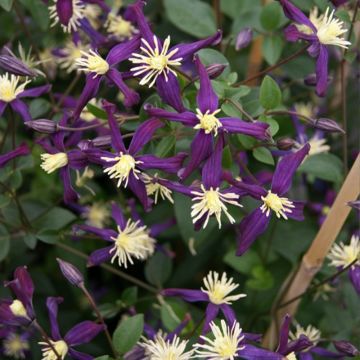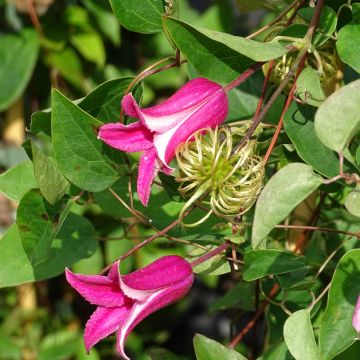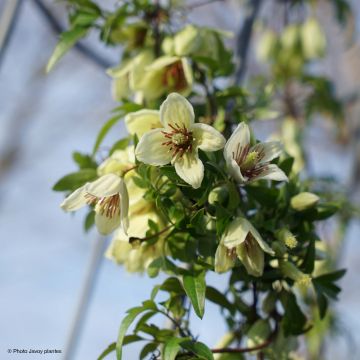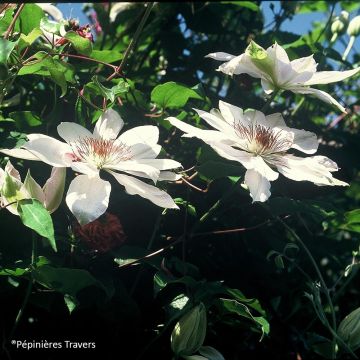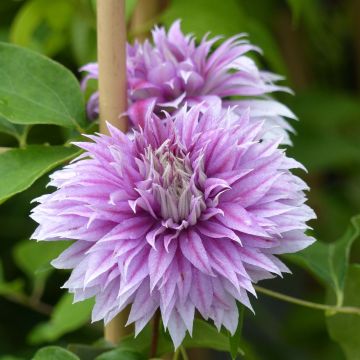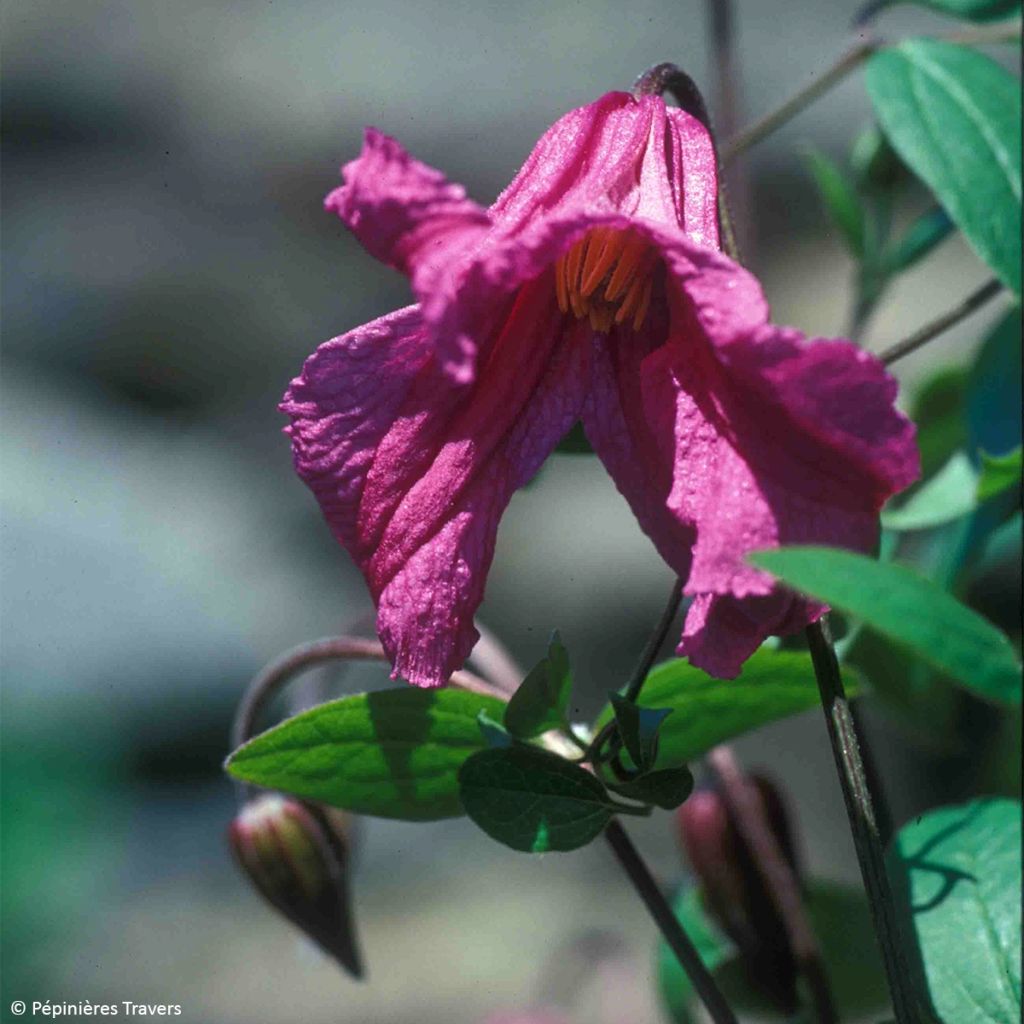

Clematis Savannah
Clematis Savannah
Clematis x viticella Savannah Evipo015
Italian Leather Flower, Purple Clematis, Virgin's Bower
Special offer!
Receive a €20 voucher for any order over €90 (excluding delivery costs, credit notes, and plastic-free options)!
1- Add your favorite plants to your cart.
2- Once you have reached €90, confirm your order (you can even choose the delivery date!).
3- As soon as your order is shipped, you will receive an email containing your voucher code, valid for 3 months (90 days).
Your voucher is unique and can only be used once, for any order with a minimum value of €20, excluding delivery costs.
Can be combined with other current offers, non-divisible and non-refundable.
Why not try an alternative variety in stock?
View all →This plant carries a 6 months recovery warranty
More information
We guarantee the quality of our plants for a full growing cycle, and will replace at our expense any plant that fails to recover under normal climatic and planting conditions.
Does this plant fit my garden?
Set up your Plantfit profile →
Description
Clematis viticella Savannah is a variety of clematis that tends to creep rather than climb, with long and numerous stems that create a lush and lightly scented ground cover throughout the summer. This plant charms with its natural style and delightful little pendulous bell-shaped flowers in a vibrant purple-pink that bloom abundantly against its light foliage. Let it wander among bushes or cascade down a wall, slope, planter, or large flower pot.
The Clematis genus belongs to the Ranunculaceae family. 'Savannah' is a horticultural variety obtained in 2003 by Raymond Evison (UK). It is a hybrid of Clematis viticella and Clematis texensis. It belongs to the group of clematis that flower in summer on new growth. It is a non-climbing herbaceous perennial plant that quickly reaches a 1.30 m (4ft), with a spread of 1.5 m². Many new shoots emerge from the base each spring.
Clematis Savannah bears small, single flowers that do not fully open, with twisted and reflexed sepals forming a small bell. The flower's centre is filled with yellow-orange stamens. It blooms from June to September on the whole plant. The pendulous flowers are solitary or grouped in pairs or threes. The colour of the sepals is a deep pink-purple that does not fade in the sun. The nectar-rich and lightly scented flowers are followed by small feathery seed heads with a greyish-silver hue. The leaves are divided into small ovate to lanceolate, fairly dark green leaflets with irregularly serrated edges. The above-ground growth is deciduous and dies in winter.
Plant clematis alongside your climbing roses or in flowerbeds. It is a diverse genus with varieties available in all colours, shapes, and sizes. Take advantage of the ease of cultivation of C. viticella varieties to give your garden a romantic and bohemian touch. 'Savannah' is easily grown in a sunny position and ordinary soil, between shrubs that flower at different times such as lilacs, mock oranges, or Japanese quinces. It will also add a beautiful touch of colour and charm to boxwood topiary and dwarf conifers. Lastly, this variety forms a beautiful duo with the variety I am Stanislaus, with its small light mauve flowers.
Clematis Savannah in pictures
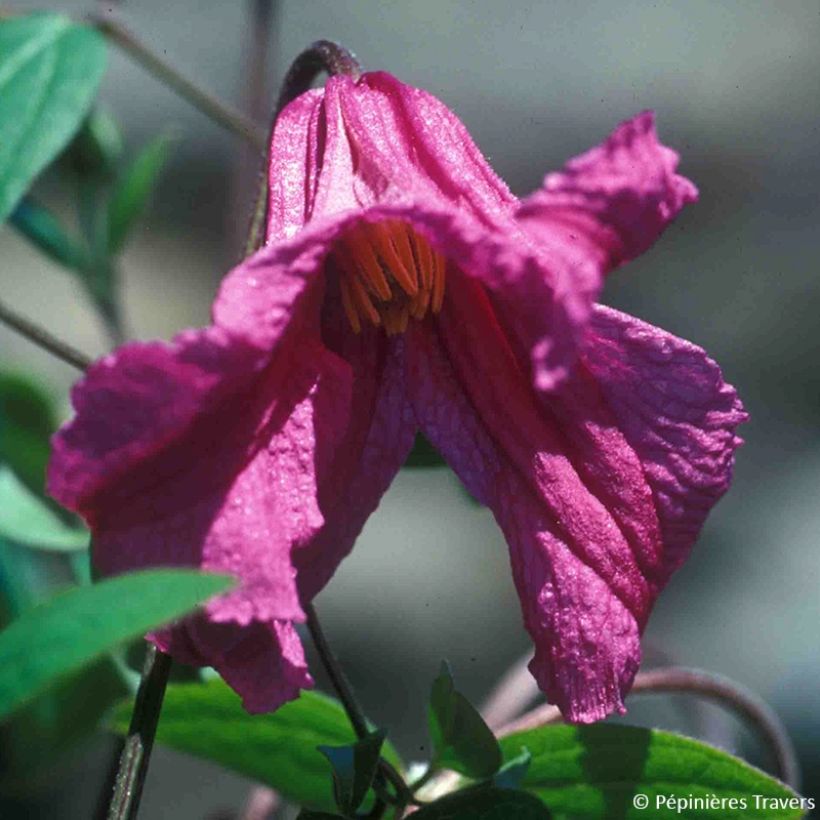

Plant habit
Flowering
Foliage
Botanical data
Clematis
x viticella
Savannah Evipo015
Ranunculaceae
Italian Leather Flower, Purple Clematis, Virgin's Bower
Cultivar or hybrid
Other Clematis Viticella
View all →Planting and care
Plant Clematis 'Savannah' in the sun, in fairly fertile, well-prepared and well-drained soil, shading the roots and base of the stem (with a flat tile, for example). Clematis plants from the C.viticella group are robust, undemanding in terms of soil and less temperamental than large-flowered clematis, also not very susceptible to clematis wilt. They are more tolerant of hot and dry summers.
Plant your clematis by covering the root ball with 3 cm (1in) of soil, in soil worked to a depth of 20 cm (8in), lightened with good compost. Water regularly during the first few weeks, but be careful of stagnant water, as it can cause collar rot. Cover the base of climbing clematis with a small mound of soil, to reduce the risk of clematis wilt, while promoting the growth of vigorous new shoots from the crown. After planting, cut back the stems of deciduous clematis to about 30 cm (12in) above a healthy pair of buds. Mulch in February with garden compost or well-rotted manure, avoiding direct contact with the stems. Train the stems, without crushing them, until the plant can cling by itself. Clematis also enjoy growing freely on neighbouring plants.
This variety flowers on new growth in summer, so prune it in March, leaving it at about 25 cm (10in) from the ground (slightly shorter on older specimens), cutting cleanly above two large buds. A slightly less severe pruning will allow this climber to reach larger dimensions, but it will flower mostly in the upper part. Voles and caterpillars can attack clematis and devour the stems. Aphids and greenhouse whiteflies are also potential pests.
Planting period
Intended location
Care
Planting & care advice
This item has not been reviewed yet - be the first to leave a review about it.
Similar products
Haven't found what you were looking for?
Hardiness is the lowest winter temperature a plant can endure without suffering serious damage or even dying. However, hardiness is affected by location (a sheltered area, such as a patio), protection (winter cover) and soil type (hardiness is improved by well-drained soil).

Photo Sharing Terms & Conditions
In order to encourage gardeners to interact and share their experiences, Promesse de fleurs offers various media enabling content to be uploaded onto its Site - in particular via the ‘Photo sharing’ module.
The User agrees to refrain from:
- Posting any content that is illegal, prejudicial, insulting, racist, inciteful to hatred, revisionist, contrary to public decency, that infringes on privacy or on the privacy rights of third parties, in particular the publicity rights of persons and goods, intellectual property rights, or the right to privacy.
- Submitting content on behalf of a third party;
- Impersonate the identity of a third party and/or publish any personal information about a third party;
In general, the User undertakes to refrain from any unethical behaviour.
All Content (in particular text, comments, files, images, photos, videos, creative works, etc.), which may be subject to property or intellectual property rights, image or other private rights, shall remain the property of the User, subject to the limited rights granted by the terms of the licence granted by Promesse de fleurs as stated below. Users are at liberty to publish or not to publish such Content on the Site, notably via the ‘Photo Sharing’ facility, and accept that this Content shall be made public and freely accessible, notably on the Internet.
Users further acknowledge, undertake to have ,and guarantee that they hold all necessary rights and permissions to publish such material on the Site, in particular with regard to the legislation in force pertaining to any privacy, property, intellectual property, image, or contractual rights, or rights of any other nature. By publishing such Content on the Site, Users acknowledge accepting full liability as publishers of the Content within the meaning of the law, and grant Promesse de fleurs, free of charge, an inclusive, worldwide licence for the said Content for the entire duration of its publication, including all reproduction, representation, up/downloading, displaying, performing, transmission, and storage rights.
Users also grant permission for their name to be linked to the Content and accept that this link may not always be made available.
By engaging in posting material, Users consent to their Content becoming automatically accessible on the Internet, in particular on other sites and/or blogs and/or web pages of the Promesse de fleurs site, including in particular social pages and the Promesse de fleurs catalogue.
Users may secure the removal of entrusted content free of charge by issuing a simple request via our contact form.
The flowering period indicated on our website applies to countries and regions located in USDA zone 8 (France, the United Kingdom, Ireland, the Netherlands, etc.)
It will vary according to where you live:
- In zones 9 to 10 (Italy, Spain, Greece, etc.), flowering will occur about 2 to 4 weeks earlier.
- In zones 6 to 7 (Germany, Poland, Slovenia, and lower mountainous regions), flowering will be delayed by 2 to 3 weeks.
- In zone 5 (Central Europe, Scandinavia), blooming will be delayed by 3 to 5 weeks.
In temperate climates, pruning of spring-flowering shrubs (forsythia, spireas, etc.) should be done just after flowering.
Pruning of summer-flowering shrubs (Indian Lilac, Perovskia, etc.) can be done in winter or spring.
In cold regions as well as with frost-sensitive plants, avoid pruning too early when severe frosts may still occur.
The planting period indicated on our website applies to countries and regions located in USDA zone 8 (France, United Kingdom, Ireland, Netherlands).
It will vary according to where you live:
- In Mediterranean zones (Marseille, Madrid, Milan, etc.), autumn and winter are the best planting periods.
- In continental zones (Strasbourg, Munich, Vienna, etc.), delay planting by 2 to 3 weeks in spring and bring it forward by 2 to 4 weeks in autumn.
- In mountainous regions (the Alps, Pyrenees, Carpathians, etc.), it is best to plant in late spring (May-June) or late summer (August-September).
The harvesting period indicated on our website applies to countries and regions in USDA zone 8 (France, England, Ireland, the Netherlands).
In colder areas (Scandinavia, Poland, Austria...) fruit and vegetable harvests are likely to be delayed by 3-4 weeks.
In warmer areas (Italy, Spain, Greece, etc.), harvesting will probably take place earlier, depending on weather conditions.
The sowing periods indicated on our website apply to countries and regions within USDA Zone 8 (France, UK, Ireland, Netherlands).
In colder areas (Scandinavia, Poland, Austria...), delay any outdoor sowing by 3-4 weeks, or sow under glass.
In warmer climes (Italy, Spain, Greece, etc.), bring outdoor sowing forward by a few weeks.































